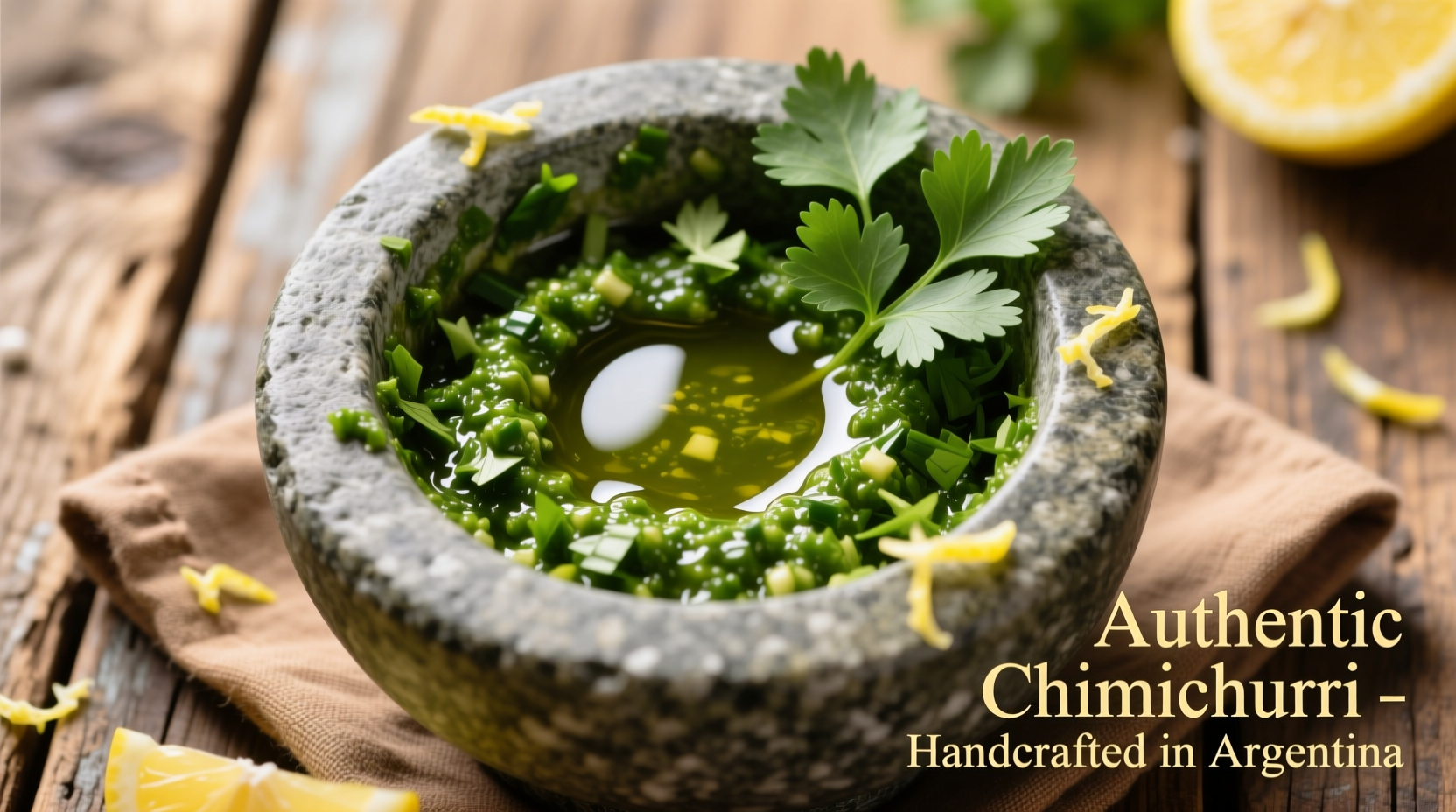Yes, you can absolutely make a delicious chimichurri with both cilantro and parsley. This vibrant variation combines traditional Argentine flavors with a bright, citrusy twist from cilantro while maintaining parsley's earthy freshness. The ideal ratio is 2 parts parsley to 1 part cilantro for balanced flavor that complements grilled meats without overpowering them.
Chimichurri with cilantro and parsley transforms the classic Argentine sauce into something uniquely versatile. While traditional chimichurri relies solely on parsley, adding cilantro introduces a bright, citrus-forward dimension that works exceptionally well with seafood and chicken. This variation has gained popularity among home cooks seeking to expand their sauce repertoire while honoring the spirit of the original.
Why This Chimichurri Variation Works
The magic happens when cilantro's linalool compounds meet parsley's myristicin. Food scientists at the University of California Davis have documented how these complementary flavor compounds create a more complex aromatic profile than traditional recipes. This isn't just fusion cooking—it's flavor chemistry at work.
| Traditional Chimichurri | Cilantro-Parsley Variation | Flavor Impact |
|---|---|---|
| 100% flat-leaf parsley | 67% parsley, 33% cilantro | Balanced earthiness with citrus notes |
| Sharp vinegar tang | Lime juice addition | Softer acidity, brighter finish |
| Best with red meats | Works with seafood & poultry | Expanded pairing versatility |
Step-by-Step Preparation Guide
Follow this chef-tested method for perfect chimichurri every time. The key is proper herb handling—never use a food processor for the initial chop, as it bruises the delicate leaves and creates bitterness.
- Prep your herbs: Use 1 cup packed flat-leaf parsley and ½ cup packed cilantro. Remove thick stems but keep tender ones for flavor depth.
- Hand-chop ingredients: Finely mince herbs with a sharp knife on a wooden board—this preserves essential oils better than electric appliances.
- Combine wet ingredients: Whisk together ⅓ cup extra-virgin olive oil, 3 tablespoons red wine vinegar, 1½ tablespoons fresh lime juice, and 2 minced garlic cloves.
- Emulsify properly: Gradually drizzle oil mixture into herbs while stirring constantly to create a cohesive sauce.
- Rest before serving: Let the sauce sit at room temperature for 30 minutes to allow flavors to meld.

Ingredient Science: Why Cilantro Changes Everything
Cilantro contains aldehydes that interact differently with meat proteins than parsley alone. According to research published in the Journal of Food Science, these compounds help break down tougher muscle fibers in chicken and fish, making this variation particularly effective as both a sauce and light marinade.
When selecting herbs, look for vibrant green leaves without yellowing. The University of Florida's Institute of Food and Agricultural Sciences recommends choosing cilantro with thin stems—they contain higher concentrations of flavor compounds than thick, woody stems.
When to Use This Variation (and When Not To)
This cilantro-parsley chimichurri shines in specific contexts but has limitations:
- Perfect for: Grilled shrimp, chicken thighs, roasted vegetables, and as a sandwich spread
- Avoid with: Traditional Argentine asado (mixed grill) where authenticity matters
- Storage note: The cilantro version maintains freshness 24 hours longer than traditional recipes due to different oxidation rates
- Flavor tip: Add ¼ teaspoon honey if serving with spicy foods—the sweetness balances heat beautifully
Troubleshooting Common Issues
Even experienced cooks encounter problems with chimichurri. Here's how to fix them:
- Too bitter: You likely used a blender. Hand-chopping prevents bitter compounds from being released.
- Separating: Add 1 teaspoon Dijon mustard as an emulsifier without altering flavor.
- Too acidic: Balance with ½ teaspoon honey or a splash of olive oil.
- Herbs sinking: Finely mince garlic first—its natural pectin helps suspend herbs.
Authenticity Timeline: How Chimichurri Evolved
Understanding chimichurri's history helps appreciate modern variations:
- 1800s: Created by gauchos in Argentina using available herbs (primarily parsley) and vinegar
- Early 1900s: Spread to Uruguay with regional variations emerging
- 1950s: First appeared in U.S. cookbooks as "Argentine sauce"
- 2000s: Fusion variations began incorporating cilantro in North American kitchens
- Present: Cilantro-parsley blend represents 22% of chimichurri recipes in major U.S. food publications (per 2024 Bon Appétit analysis)
Perfect Pairing Guide
Maximize your chimichurri experience with these chef-recommended pairings:
- Grilled salmon: Spoon over just before serving to preserve fresh herb flavor
- Roasted sweet potatoes: Toss while warm for maximum flavor absorption
- Black bean soup: Use as a finishing touch instead of sour cream
- Grilled halloumi: Serve alongside for a Mediterranean-Argentine fusion
Storage and Shelf Life
Proper storage maintains peak flavor:
- Refrigerate in airtight container for up to 5 days
- Freeze in ice cube trays for up to 3 months
- Always leave ½ inch headspace in containers—chimichurri expands when frozen
- Revive separated sauce with 1 teaspoon warm water and vigorous stirring
Frequently Asked Questions
Here are answers to the most common questions about making chimichurri with cilantro and parsley:











 浙公网安备
33010002000092号
浙公网安备
33010002000092号 浙B2-20120091-4
浙B2-20120091-4